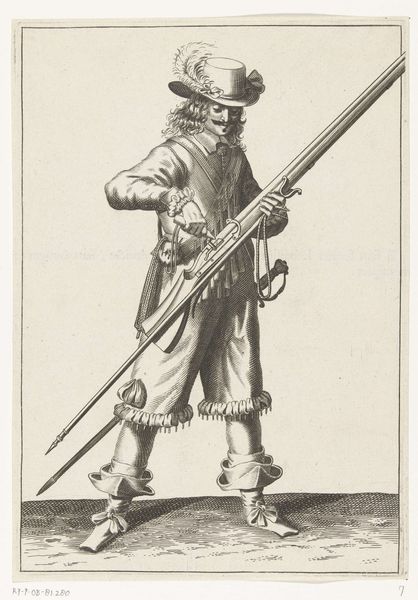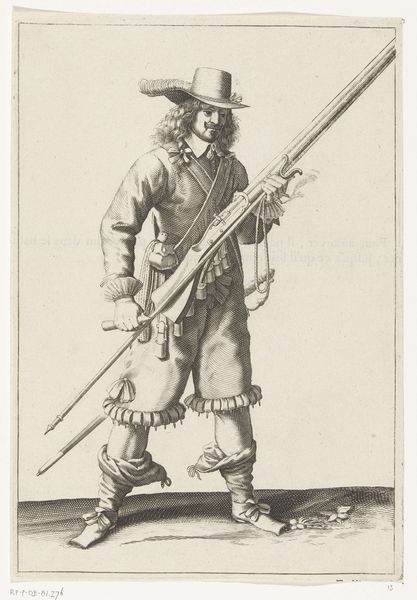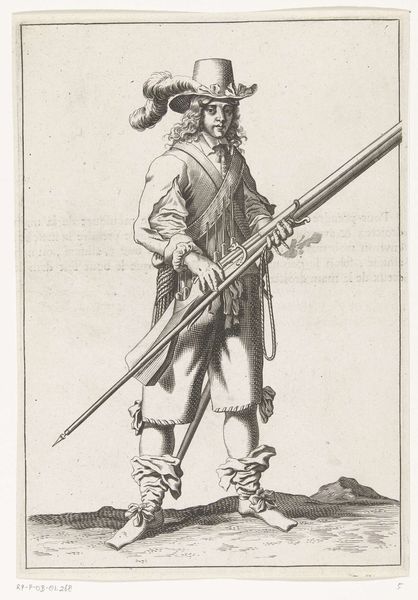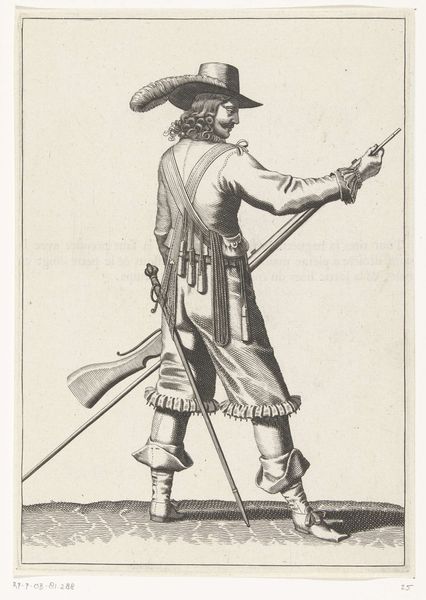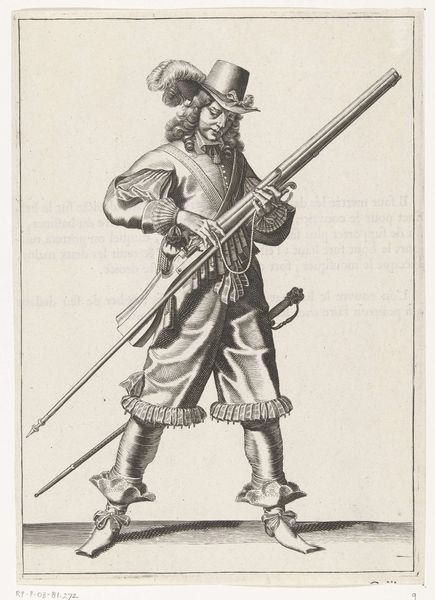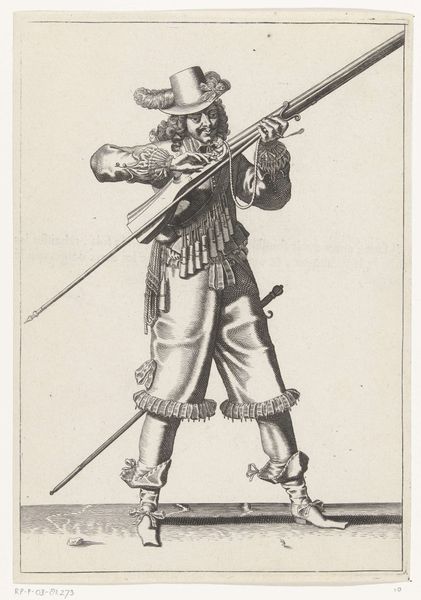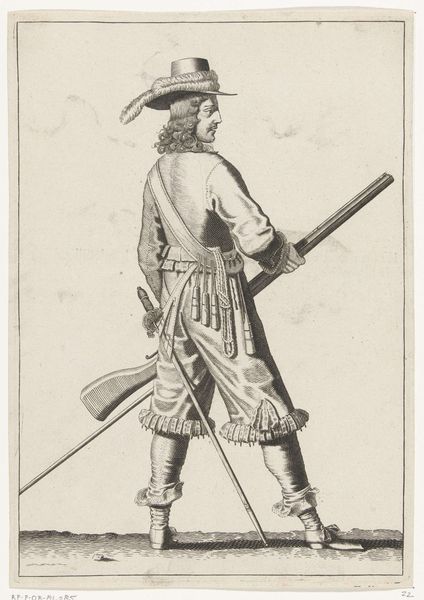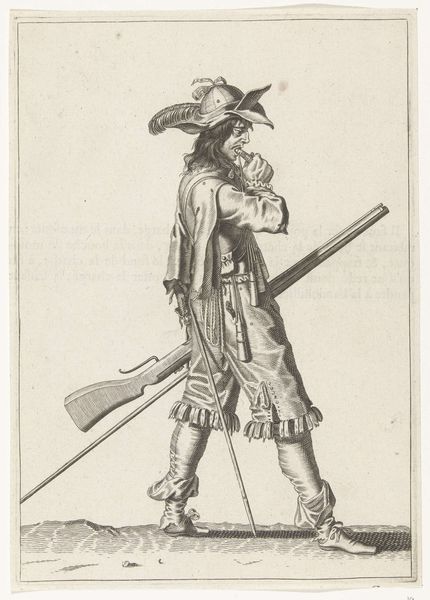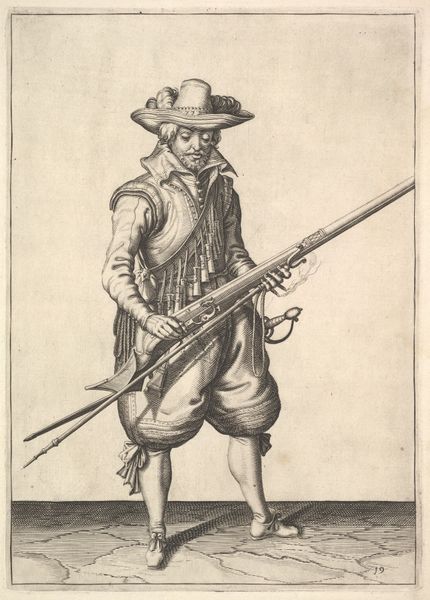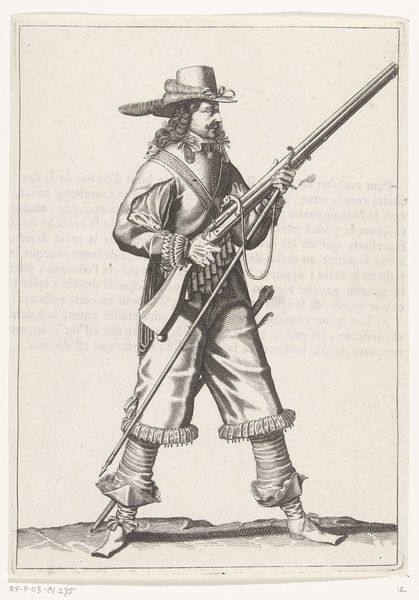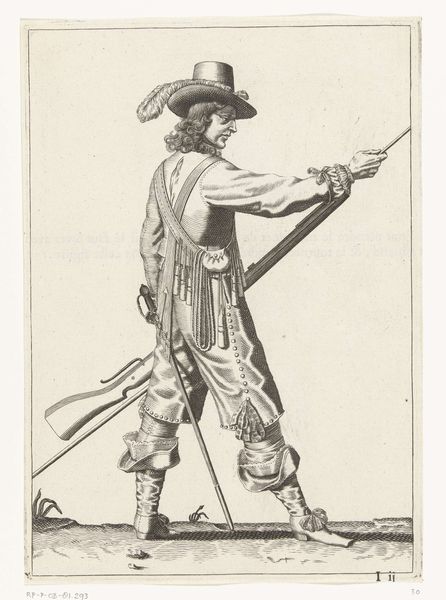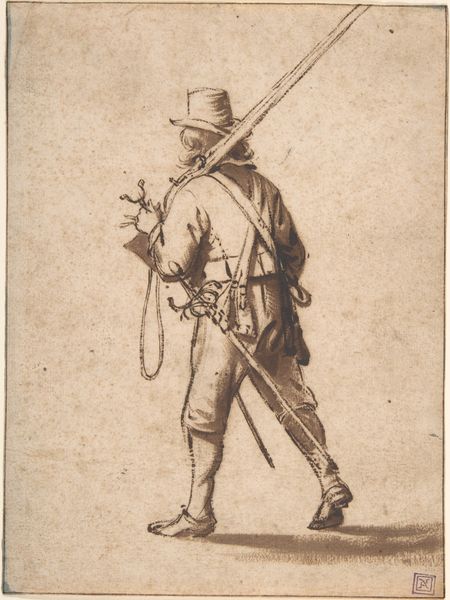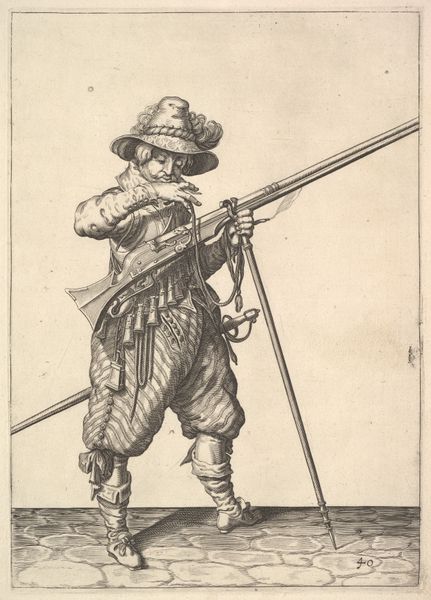
print, engraving
#
portrait
#
weapon
#
baroque
# print
#
caricature
#
figuration
#
line
#
portrait drawing
#
genre-painting
#
history-painting
#
northern-renaissance
#
engraving
#
realism
Dimensions: height 235 mm, width 165 mm
Copyright: Rijks Museum: Open Domain
Editor: So, this is "Soldaat die de pan van zijn musket sluit, ca. 1645" or "Soldier closing the pan of his musket, ca. 1645" by Petrus Rucholle. It’s an engraving, probably from around 1645. The detail is really striking. He’s looking right at us. What do you see in this piece, from a historical perspective? Curator: What immediately strikes me is how this image reflects the growing professionalization of warfare in the 17th century. It’s not just about battles; it’s about representing the individual soldier. We see a specific moment, not glory, but preparation. What was the social position of soldiers like then? Editor: I think soldiers, while essential, were viewed through complex lenses of social class, necessity, and sometimes, fear. Their status wasn't always elevated, despite their role. Curator: Precisely. Prints like this were part of a visual culture that helped shape public perception of these roles. Consider the political context; the Dutch Republic was fighting for its independence. Images like these could have served to inspire patriotism, but also to make soldiery more approachable, relatable even. Notice the detail in the uniform - how does that resonate with the period? Editor: I see your point. The intricate details in his clothing seem to emphasize the soldier's identity, and suggest a need to connect these fighting men to a more tangible social framework. So, beyond just a soldier, it's a constructed representation with a socio-political purpose? Curator: Absolutely! This wasn’t just about documentation; it was about actively shaping the role of the military within Dutch society, and projecting it beyond. It serves as both historical record, and a potent tool of cultural influence. It makes you wonder, what kind of conversations and dialogues happened thanks to this engraving back in the 17th Century? Editor: Definitely a powerful thought to consider! Thanks for providing so much insights.
Comments
No comments
Be the first to comment and join the conversation on the ultimate creative platform.
